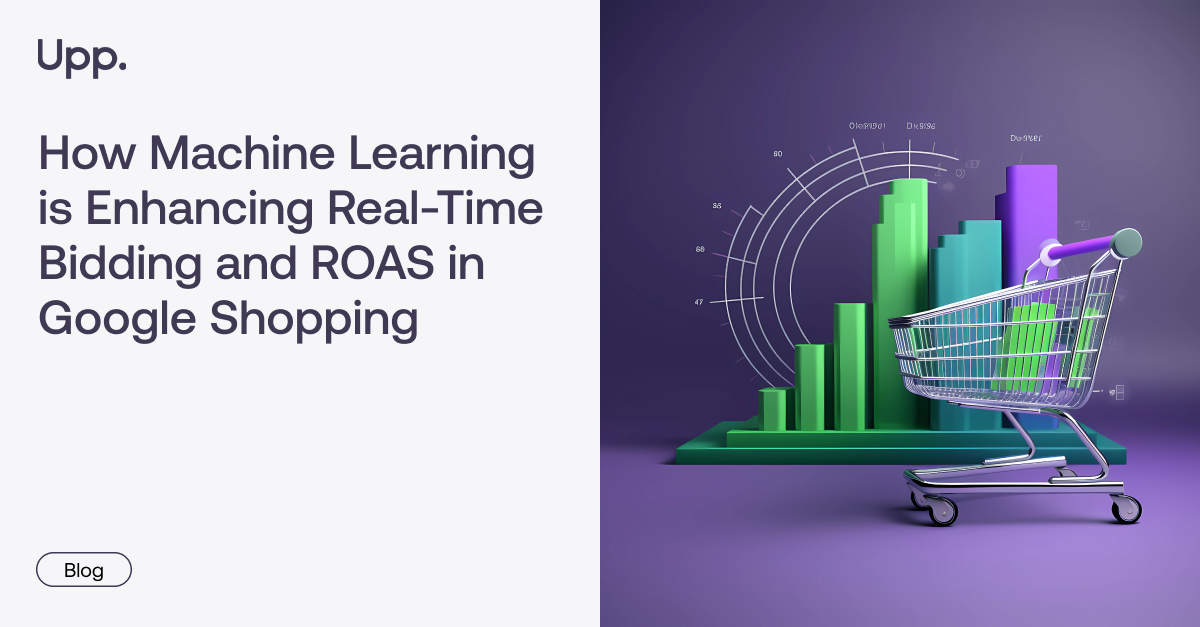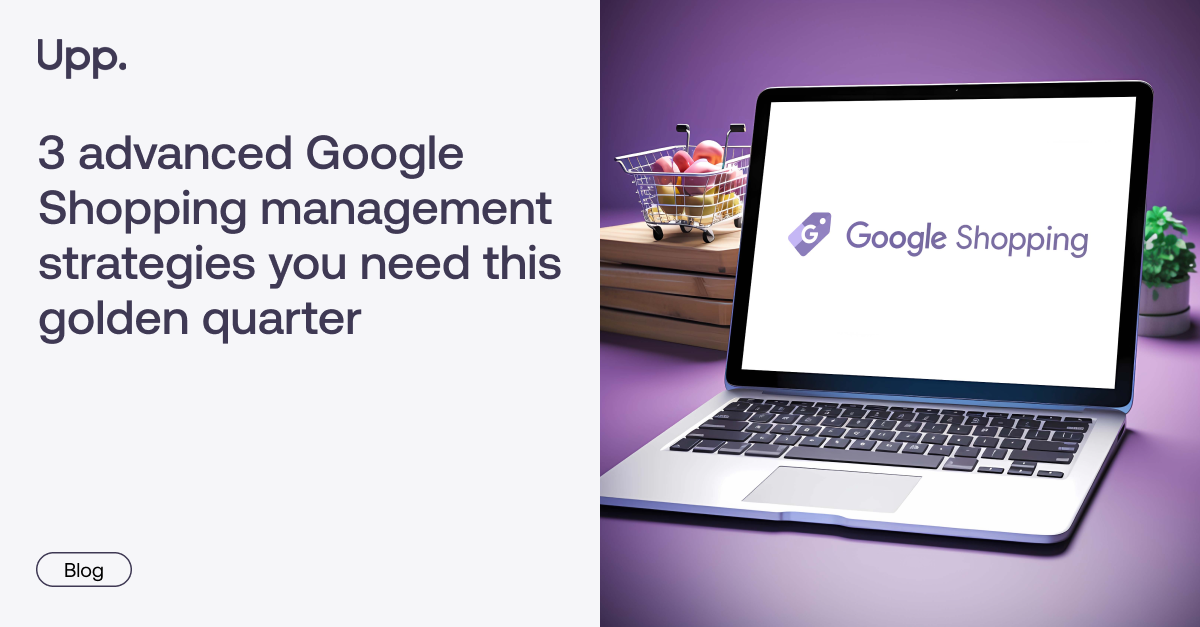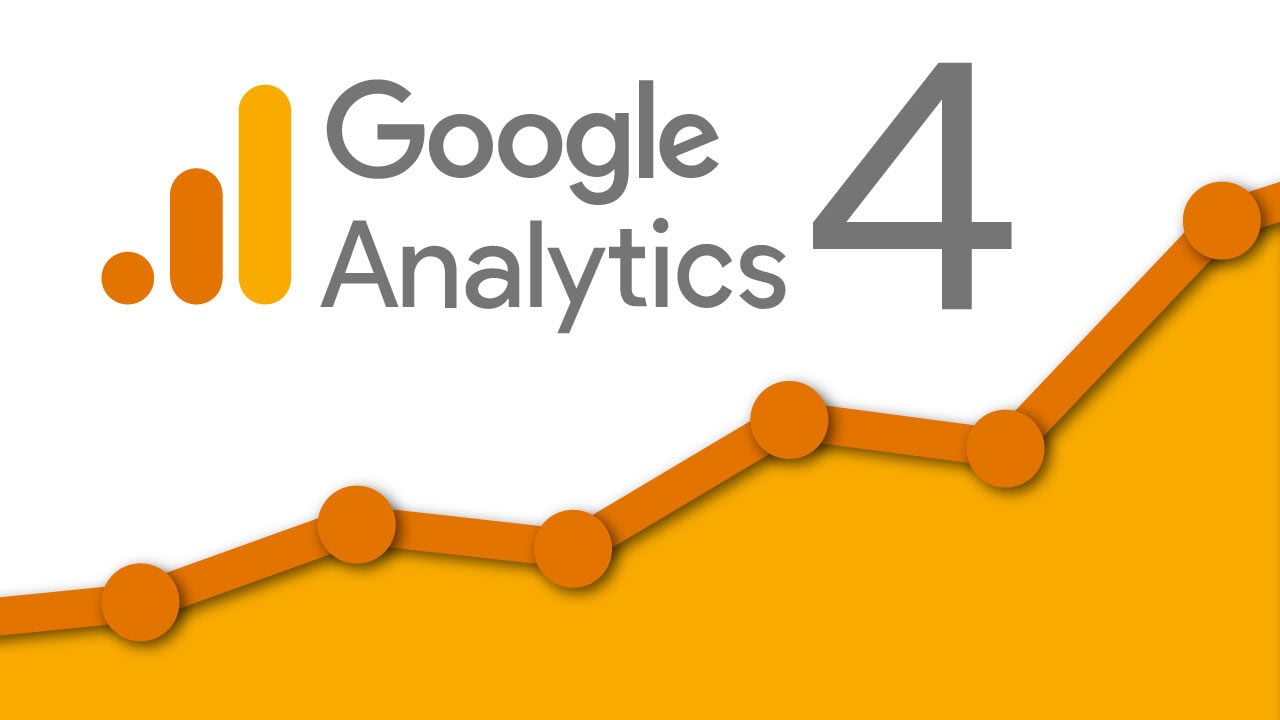Leveraging Machine Learning for ROAS: A Step-by-Step Guide
In retail, commercial success is determined by how well you can control your return on ad spend (ROAS). Every marketing penny counts, so achieving a high ROAS not only means increased profits but can also determine the direction of your marketing campaigns, making your team more efficient and streamlined.
Sounds relatively straightforward, in theory – but your business isn’t immune to external factors. Rising ad costs, intense competition and new players entering the game, as well as changing customer behaviours and preferences create the perfect storm. Retailers need to explore new innovative strategies to overcome these day-to-day hurdles. This is where leveraging machine learning (ML) tools can support and boost your ROAS.
What is machine learning and how can you use it in advertising?
On a basic level, machine learning is the science of enabling computers to gain information from data without being explicitly programmed – instead, it learns from the data you give it. How does this work in the world of advertising? Machine learning tools can analyse large datasets and delve into algorithms to identify patterns and make predictions.
So let’s imagine that you’re running a Google Shopping campaign. Google Shopping is a platform that’s already embedded machine learning technology – and has done so for twenty-two years. If you adopt machine learning to improve your Google Shopping, it can act as your digital marketing assistant. Not just in the platform itself, but by analysing everything from historical data and user intent through to COGS data and market trends to predict which of your products will perform well.
Unfortunately for most retailers, they’re not feeding Google’s machine learning platform with this data in a way it can reliably learn from.
If you can feed the Google Shopping machine with organised, intelligent data that tells Google exactly what your entire business needs from Google Shopping – and do that in real-time – you’re teaching it how to win for you and your retail business.
Upp.AI is a machine learning tool that does exactly that
Upp.AI has the power to take as much data as you can give it and use this information to organise your products into Google Shopping Performance Max campaigns based on how well the product is likely to perform rather than by product categories. The platform then allocates your budget into these campaigns in real-time whilst maintaining their tROAS (target ROAS). Using this technology gives you more accuracy and efficiency in your campaigns; optimising bids, placements and targeting in real-time.
Ultimately, if you want to start seeing improved profits and stay ahead of the game, then giving machine learning what it needs to perform the best it can should play a central role in your advertising strategy. Not only does it save time in manual labour, allowing your team to focus on strategic goals, but it provides more precise targeting, improved user journey for your customers, and ultimately achieves a higher, more profitable, ROAS.
How to implement machine learning for ROAS: the step by step guide
Now that you’re familiar with the theory, it’s time to spring into action. Here’s a step-by-step guide to leverage machine learning tools to boost your ROAS:
1. Sort out your data
Start by gathering and organising your data – from customer demographics and purchase history, to website behaviour and historical ad performance metrics. It’s important to get all your data in one place. Sound like a lot of work? Upp.AI can automate this for you.
2. Tap into machine learning capabilities on different platforms
Google’s Responsive Search Ads: Take A/B testing out of the equation and let Google’s new Responsive Search Ads take the lead. Simply input a variety of different headlines and descriptions in the same ad, and machine learning will determine the best combination for your audience.
Facebook’s Lookalike Audiences: Using Facebook ads, utilise your current customer data to allow machine learning to create a whole new audience segment, based entirely on the behaviours and demographics of your current customer base. You can segment these audiences even further by defining what products they purchase, so you can serve more personalised ads. What a time saver!
Google Shopping Performance Max: Truly harness machine learning power with Google Shopping’s Performance Max – the most dynamic resource in retail. To maximise these campaigns, Upp.AI meticulously tends to each SKU you showcase online 24/7. It organises your inventory to ensure optimal performance and consistently analyses your business and customer data in relation to the current market trends for your product. As soon as changes become necessary, Upp.AI automatically implements these adjustments right away.
3. Use advanced algorithms
Leverage algorithms to fit your objectives. Want to predict customer behaviours? Try regression models. Perhaps you need to segment your products in real-time? Give clustering algorithms a go like our product grouping algorithm (PGA).
4. Optimise, optimise, optimise!
For any campaign, it’s important to keep an eye on performance and make changes if necessary. This is an area where Upp.AI can help – all you have to do is establish your objectives (such as growth, profitability, revenue, and user acquisition), and Upp.’s decision intelligence takes care of the rest. It automatically and consistently restructures your Performance Max campaigns, aiming to achieve optimal performance across your complete inventory.
How to measure the impact of ROAS before and after machine learning
Has this shift to machine learning actually worked? It’s time to create a robust measurement framework to check if your ROAS has increased since changing strategy. We recommend:
Defining Key Metrics
Obviously, we’re here mainly to increase ROAS, but it’s still important to identify other key performance indicators (KPIs) such as click-through rate (CTR), conversion rate, and customer acquisition cost (CAC).
Utilise Analytics Tools
There are tonnes of great tools out there, but the obvious one is, of course, Google Analytics. This provides in-depth insights into user behaviour, enabling you to track user journeys and attribute conversions accurately.
Comparative Analysis
This is the main one. Compare your ROAS before and after. Has it improved? Are there areas that are showing remarkable growth? This should help inform your next steps with machine learning tools.
Simplify with Upp.
Our AI technology collects and arranges inventory data for peak performance, optimised by machine learning predictions. Upp.AI prioritises results, delivering exclusive insights that empower CMOs and CFOs to justify decisions and improve business results.
How has this worked in practice?
Fashion brand Roman was seeing a performance decline on Google Shopping when using traditional methods. Upp.AI organised Roman’s inventory into campaigns that were based on performance potential instead of product lines and then began to force inventory exposure, all the while collecting data for our machine learning tool, to both increase performance and ensure constant improvement. This kickstarted a road to success, leading Roman to:
- Increase its Google Shopping spend by 118%
- Experience a 181% increase in revenue
Here’s what Ryan Coleman, Roman’s eCommerce marketing manager had to say: “Working with Upp. has enabled us to use Google Shopping to hit our business goals. If we need to drive straight ROAS, Upp.AI hits the targets we set. In early December we needed to hit a 4 x return and within 2 weeks we were hitting this consistently.”
Machine learning tools are a necessity in retail, not an option
In this rapidly evolving space, leveraging machine learning for ROAS enhancement is no longer an option; it’s a necessity. We hope that by understanding the fundamentals of machine learning, grasping the potential of feeding the technology with intelligent, organised data, and following a strategic implementation roadmap, you can unlock the door to improved profitability and growth.
Upp. can give you a helping hand – find out how we can help boost your business’ ROAS with the power of machine learning, and join our webinar on 23rd August.




